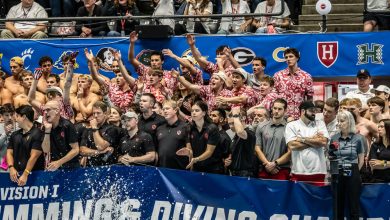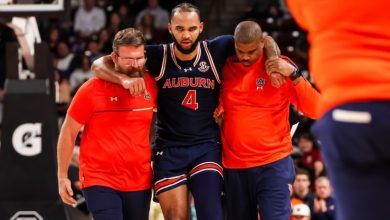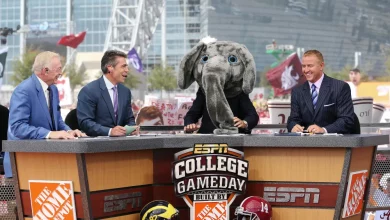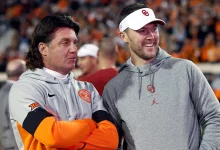Ravens planning to have two separate joint practices with Colts, Commanders
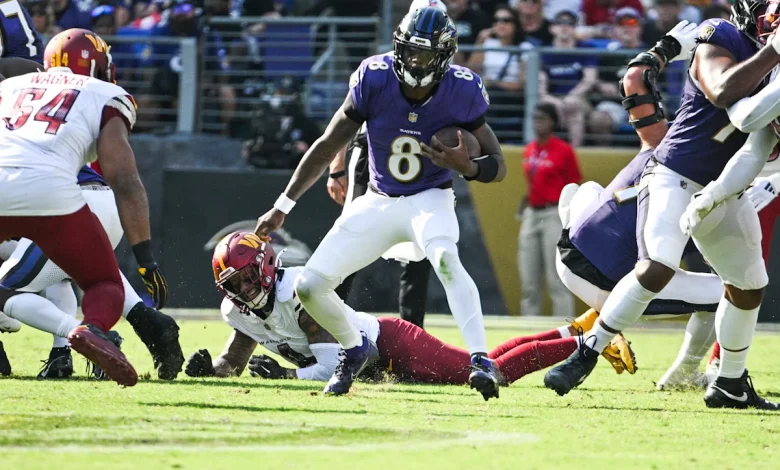
Ravens planning to have two separate joint practices with Colts, Commanders
The Baltimore Ravens are set to enhance their preseason preparations and team cohesion through two separate joint practices with the Indianapolis Colts and the Washington Commanders, respectively. These joint sessions, a staple in NFL offseason and preseason routines, serve multiple strategic purposes, including evaluating players, improving team chemistry, and simulating game conditions. This comprehensive overview will explore the significance of joint practices, the strategic considerations behind choosing these opponents, the benefits and challenges associated with such sessions, and what Ravens fans and analysts can expect from these upcoming joint practices.
**Understanding Joint Practices in the NFL**
Joint practices involve two teams practicing against each other during the offseason or preseason period, often in the lead-up to regular-season games. Unlike typical intra-team scrimmages, joint practices provide a controlled environment where teams can simulate game-like scenarios against different opponents without the stakes of an actual game. These sessions are usually held at neutral sites or at one team’s training facility, depending on logistical arrangements.
The primary goals of joint practices are:
– **Player Evaluation:** Coaches can assess players’ performance against different opponents, identify depth chart contenders, and evaluate new acquisitions or rookies.
– **Team Chemistry and Cohesion:** Practicing against external teams fosters adaptability, communication, and understanding of various schemes and tactics.
– **Game Preparation:** Teams can work on specific situational drills—red zone, two-minute drills, third-down situations—mirroring potential game scenarios.
– **Injury Prevention and Conditioning:** These practices provide a bridge between training camp and the regular season, helping players build stamina and sharpness.
Despite their benefits, joint practices require careful planning to avoid injuries and maintain competitive integrity, making collaboration between teams essential.
**The Ravens’ Strategic Choice: Colts and Commanders**
The decision to hold joint practices with the Indianapolis Colts and the Washington Commanders reflects strategic planning by the Ravens’ coaching staff, ownership, and management. Several factors influence such choices:
1. **Geographical and Logistical Convenience:** Both the Colts and the Commanders are located in regions conducive to travel logistics, allowing for efficient planning of practice schedules.
2. **Competitive Matchups:** The Ravens seek to test their roster against diverse styles of play. The Colts, with their strong defense and balanced offense, present a different challenge compared to the Commanders, known for their aggressive defense and dynamic quarterback play.
3. **Developmental Opportunities:** These opponents offer varying offensive and defensive schemes, enabling Ravens players to adapt to different tactical approaches, thereby broadening their experience.
4. **Existing Relationships and Past Experiences:** The Ravens have a history of engaging in joint practices with both teams, fostering familiarity and trust that facilitates productive sessions.
5. **Market and Fan Engagement:** High-profile joint practices can generate media coverage and fan interest, enhancing the NFL’s community engagement.
**Timeline and Locations of the Joint Practices**
While specific dates are subject to logistical adjustments, the Ravens’ plans include:
– **Joint Practice with the Indianapolis Colts:** Scheduled approximately two weeks before the start of the regular season, likely in late August. The practice will be held at the Ravens’ training facility in Owings Mills, Maryland, or at a neutral site in the region, providing an optimal environment for both teams to prepare.
– **Joint Practice with the Washington Commanders:** Similarly scheduled in late August, this session may take place either at the Commanders’ training camp facility in Ashburn, Virginia, or again at a neutral location. The proximity of the teams’ facilities makes scheduling manageable.
These sessions are typically conducted over two days, with each team rotating periods to work against each other, followed by controlled scrimmages or situational drills.
**Benefits of These Joint Practices for the Ravens**
The Ravens stand to gain significantly from these joint sessions across several dimensions:
1. **Enhanced Player Evaluation:** Coaches can observe how players perform against different schemes and talent levels, helping to make roster decisions, especially for roster spots competing for depth and special teams roles.
2. **Improved Team Chemistry:** Practicing against different opponents enhances communication, understanding of various offensive and defensive tactics, and overall cohesion.
3. **Refined Game Plan Implementation:** These sessions allow coaches to test specific strategies, formations, or plays against different defensive looks and offensive schemes, providing valuable insights before the regular season.
4. **Injury Prevention and Conditioning:** Joint practices serve as intense but controlled football action, helping players build stamina and sharpness without the full-contact intensity of an actual game.
5. **Player Development:** Young players and rookies benefit from increased reps and the opportunity to prove themselves in a competitive environment.
6. **Preparation for Regular Season Opponents:** Exposure to diverse styles prepares the Ravens for their upcoming opponents, especially in terms of adjusting schemes and game plans.
**Challenges and Risks of Joint Practices**
Despite their advantages, joint practices also come with inherent risks:
– **Injury Risk:** The most significant concern is the potential for injuries, especially when players push hard during competitive drills. Proper supervision and rules enforcement are vital to mitigate this risk.
– **Competitive Integrity:** Teams must balance competitiveness with safety, ensuring players don’t go all-out in a way that could cause injuries or give away strategic plays.
– **Logistical Coordination:** Scheduling, facility arrangements, and adherence to NFL protocols require meticulous planning and cooperation between teams.
– **Media and Public Relations:** Managing media coverage and fan expectations is essential, especially if injuries or setbacks occur during these sessions.
– **Player Fatigue:** Multiple joint practices can lead to fatigue, which must be managed to prevent overtraining or burnout.
**What to Expect from the Ravens’ Joint Practices**
Given the strategic importance of these sessions, the Ravens’ coaching staff will likely focus on several key areas:
1. **Offensive Line and Quarterback Development:** Working on protection schemes, timing, and communication, particularly against the aggressive defensive fronts of the Colts and Commanders.
2. **Defensive Schemes and Pass Rush:** Testing pass-rush rotations and coverage schemes, especially with emerging players like Odafe Oweh, David Ojabo, and younger defensive backs.
3. **Special Teams Coordination:** Practicing kickoffs, punts, and situational plays critical to field position and game momentum.
4. **Evaluating Role Players and Rookies:** Giving younger or less-established players extended reps in competitive scenarios to assess their readiness.
5. **Situational Drills:** Focusing on red zone efficiency, two-minute drills, and third-down conversions to refine in-game decision-making.
6. **Adjustments and Flexibility:** Observing how players adapt to different coaching styles and schemes, fostering versatility.
**Implications for the Ravens’ 2023 Season**
These joint practices are integral to the Ravens’ overall preseason strategy. By engaging with diverse opponents, the team aims to identify its strengths and weaknesses, fine-tune its schemes, and build cohesion ahead of the regular season. The insights gained will influence roster cuts, depth chart decisions, and tactical adjustments. Moreover, these sessions serve as a valuable mental and physical preparation, fostering resilience and adaptability—qualities essential to a successful campaign.
**Community and Fan Engagement**
Joint practices also serve as a spectacle for fans, providing a rare opportunity to see NFL teams practice and scrimmage in a semi-competitive environment. These events often attract media coverage, autograph sessions, and community outreach initiatives, strengthening the bond between teams and their supporters.
The Baltimore Ravens’ plan to hold two separate joint practices with the Indianapolis Colts and the Washington Commanders underscores their commitment to meticulous preparation and player development. These sessions offer a multitude of benefits—from evaluating talent and refining schemes to building team chemistry and engaging fans. While challenges such as injury risks need careful management, the strategic value of these joint practices is undeniable. As the Ravens gear up for the 2023 NFL season, these sessions will play a crucial role in shaping their approach, assessing their roster, and positioning themselves for a competitive run. Fans and analysts alike will be watching closely, eager to see how these collaborative efforts translate into on-field success when the games begin.



